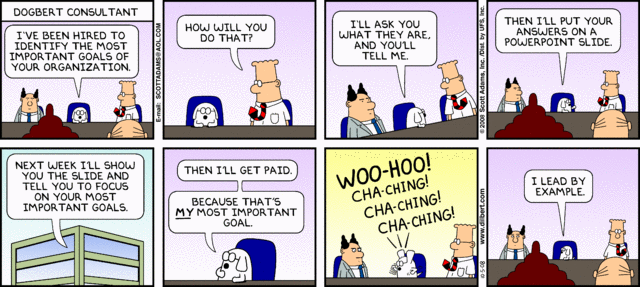|
Instructors: |
How Universities Work
|
Office Hours: |
    Dilbert by Scott Adams |
||
|
Throughout the United States, colleges and universities struggle to understand and adjust to competition, variable public support, resistance to tuition, dissatisfaction with various aspects of post-secondary life, calls for endless accountability, budget crises, and other challenges. At the same time these institutions find themselves ever more essential to the American understanding of the good life. Study after study demonstrates that a college education is often the minimal prerequisite for access to reasonable middle class standing in America. Parents seek educational advantages for their children from birth, competition for places at prestigious institutions remains at an all-time high, and regions, states, the nation, and our international colleagues demand the continued production of university research and skilled graduates to drive economic competitiveness. In this context, the organization and operation of higher education institutions, always more of an art than a science, challenges creativity and commitment. Faculty guilds seek higher pay, greater security, and more autonomy. Student clients and customers demand higher quality, lower cost, and greater attention to their personal, emotional, and recreational needs. Supporters in legislatures and the public seek better education for lower cost and with a higher yield. Alumni and donors expect high achievement and nationally distinguished programs in all areas. This course focuses on the wide range of post-secondary institutions in the United States with a special interest in research universities. While research universities constitute only a fraction of the institutions providing higher education in America, their standards operations, and values influence much of the rest of the post-secondary educational environment. We explore the topics of this course less to provide a single strategy for institutional success and more to develop the tools for analysis and action. Colleges and universities come in many forms, have different histories, and find themselves located in widely different economic, political, social, and organizational space. Every institution, however, must deal with similar issues and problems, and the tools developed here will serve every kind of institution. © 2018 |
||